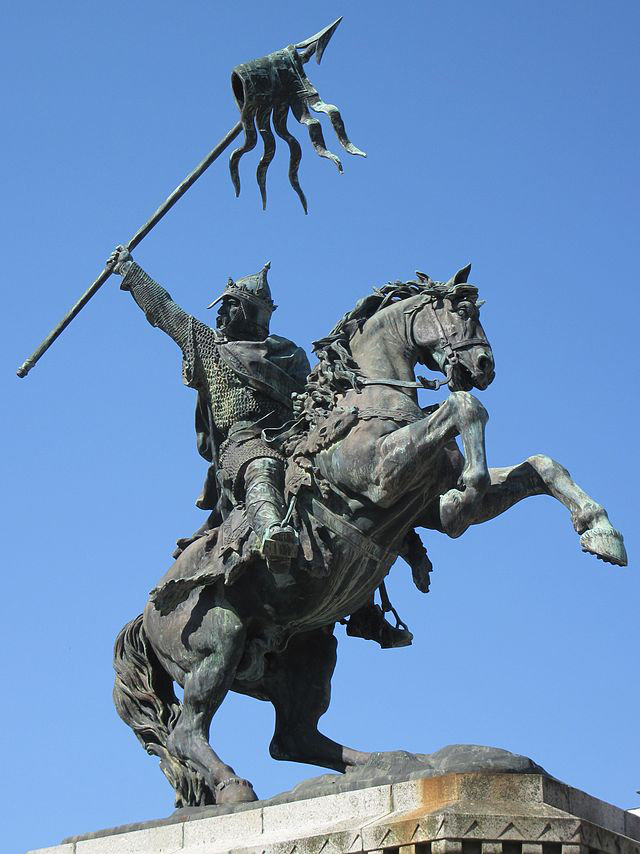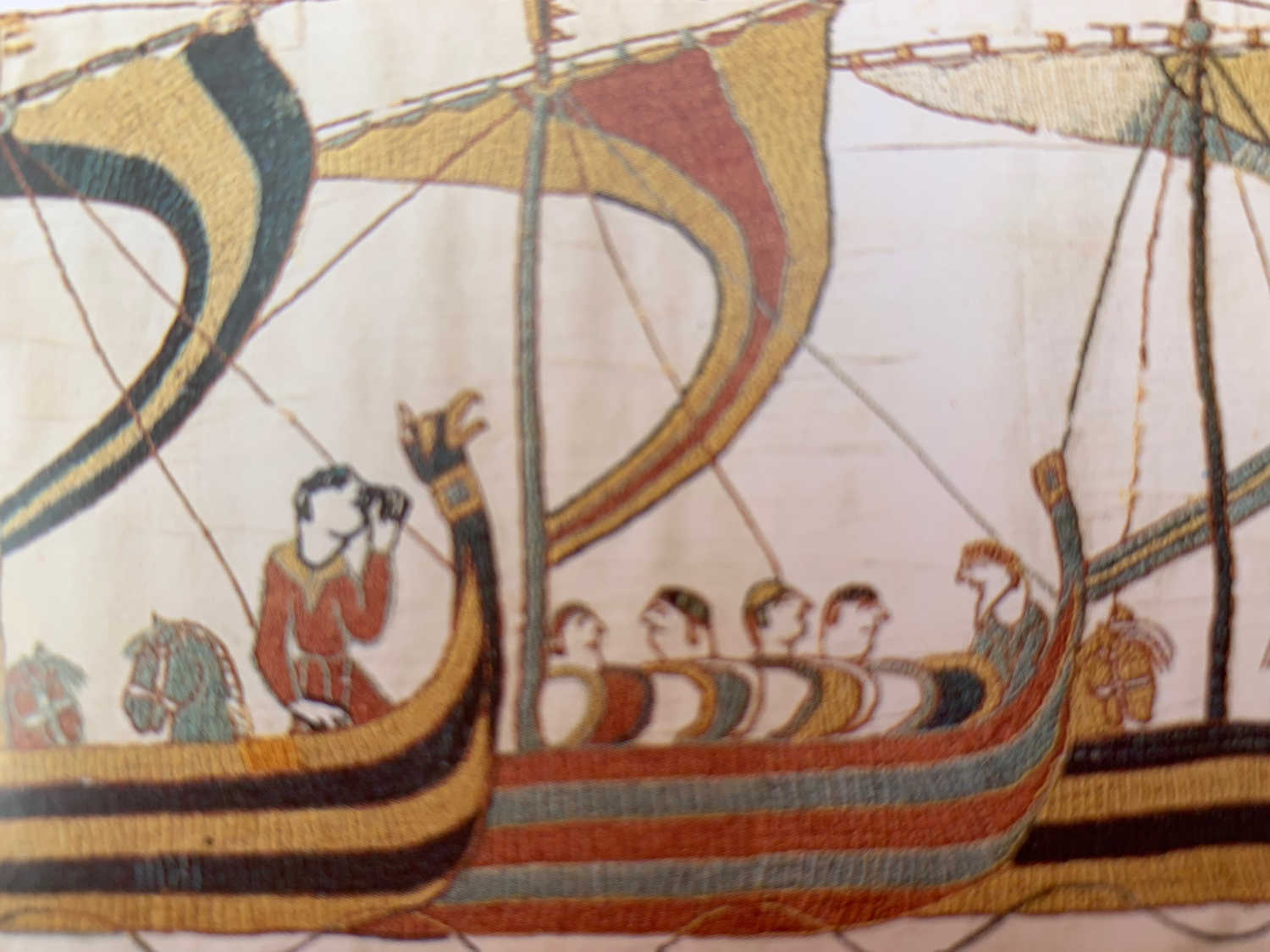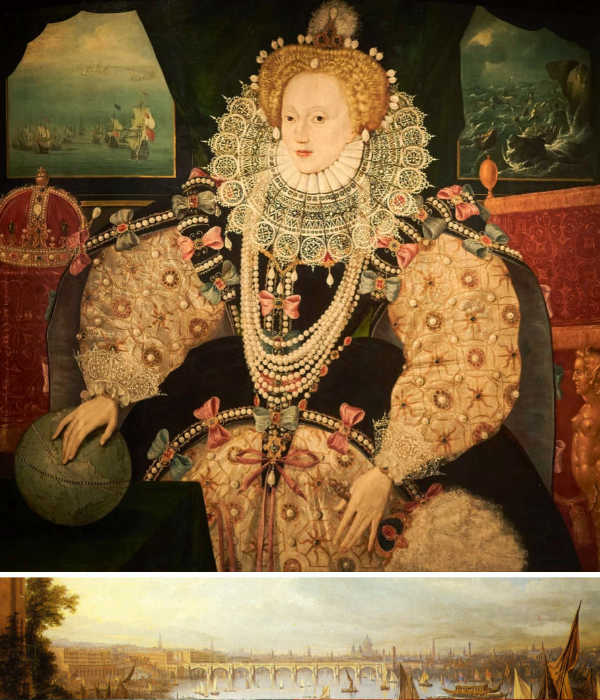What happened next?
Making history is one thing. Keeping it is another.

William had won the day at Hastings - just. By the end of his reign less than half a dozen of the greater landlords or those tenants-in-chief who held land directly from the king were English. The rest were Norman. Joining this new aristocracy and their new language, were their new style of art, dress and architecture, and their castles and new church buildings which were appearing across the land. From a distance Anglo-Saxon England looks like it went over like a house of cards. Things are never that easy.
On paper William was extremely well placed to take the keys to the kingdom. The English kings had an unusually centralised and effective government. That had made the kingdom so desirable to Vikings and Normans alike - England was rich and that wealth could be efficiently extracted as cash. The huge casualty rate amongst the English aristocracy from the three battles of 1066 left enough gaps at the top of this apparatus that William and his men could take their places in the hope that life would carry on very much as before.
In practice that was a long shot. Harold may have been gone but most of his problems remained. William even managed to revive some more that Harold might have felt he had put to bed.
Harold Godwinson had won the scramble to succeed Edward the Confessor, then William had won the crown from him. But that race was by no means over. Swein Estrithson carried the Danish claim after the death of Harald Hardrada at the battle of Fulford. Harold Godwinson had sons who could now claim royal blood. As did Edgar Aetheling, grandson of Edmund Ironside, great-grandson of Aethelred II the Unraedy and latest in a line that traced back through Alfred and beyond. What Edgar lacked in years, experience and land he made up for in heritage. There was heritage of a sort too in the surviving nobles from the further branches of the house of Wessex family tree and other interested and influential figures including count Eustace of Boulogne or Malcolm II, king of the Scots. All would have fancied that their claim could be as good as William’s. If only they succeeded of course.
If this list was not long enough, William then added to it.
The north - the area broadly covered by Mercia and Northumbria north of a line from the Wash to the Severn - had historically been the Danelaw and retained plenty of an identity which the English kings who emerged from Wessex in the south did well not to overlook. Some things are reassuringly familiar. Harold Godwinson had backed local will in Northumbria over his brother when earl Tostig rebelled in 1064 and, however briefly, he had needed to remind the far north of his kingship early in 1066.
William started carefully. Orderic Vitalis picks up the story after Hastings at the end of 1066: "For when King William had made his peace with Earl Edwin, granting him authority over his brother and almost a third of all England, he had promised to give him his daughter’s hand in marriage…".
This was a sensible move. William’s hold in the days after Hastings had been precarious. His army had been held up near Dover as a dose of dysentry ran through the camp and it was only when he ravaged a circuit around London that the surviving English nobles started to come over to him. By December he was in London and the new king could be crowned on Christmas Day in the new Westminster Abbey.
For all the auspiciousness of the day that celebrated the birth of the king of kings and when Charlemagne had taken the imperial crown, fragility shone through. As the crowd outside the Abbey gave traditional shouts of acclamation William’s Norman troops mistook it for rioting and started burning houses. Hearing only the din echoing from outside, William is said to have trembled as he sat enthroned in state. Hardly a shrinking violet, William must have realised how much of a risk this expedition still was. Devolving for now power over land he could not hold himself while winning some support from the English gave a double benefit, even if that power was going to Harold’s brothers-in-law who came close to fighting at Hastings themselves.
Yet by 1068 - barely more than a year later - Edwin and Morcar, together with many other English survivors, were in open revolt. What went wrong?
Allowing Orderic to finish his sentence will start to shed some light:
…but later, listening to the dishonest counsels of his advisors, he withheld the maiden from the noble youth, who greatly desired her and had long waited for her. At last his [Edwin’s] patience wore out, and he and his brother were roused to rebellion, supported by a great many of the English and Welsh… All were ready to conspire together to recover their former liberty, and bind themselves by weighty oaths against the Normans’
Orderic Vitalis
All of this for love? Perhaps unlikely. Although confirmation of the slight to his dignity and ardour may well have been the point of no return for Edwin, who seems the closest the English had to a natural leader as Edgar Aetheling never gathered a following to match the promise of his ancestors.
For the rest of the English, the reality of Norman rule was becoming clear. Florence of Worcester, like Orderic chronicling events from the early 1100s, tells how William
laid taxes on people very severely, and then went in Spring [1067] to Normandy and took with him Archbishop Stigand, and Aethelnoth Abbot of Glastonbury, and Edgar Aetheling and earls Edwin, Morcar and Waltheof, and many other good men from England. And bishop Odo and earl William stayed behind and built castles far and wide across the country, and distressed the wretched folk and after that it grew much worse.
Orderic Vitalis
It is not hard to imagine the great and the good of what remained of the English nobility returning home after a tour where they had been little more than trophies to find devastation and uproar. It is unlikely that the Normans had any respect for English claims to land and property, while the destruction of whole sections of towns and the requisitioning of materials for castle building would have been transforming the landscape. The impact would have been there for all to see.

William’s regents, his half brother Odo bishop of Bayeux and Earl William fitzOsbern were not remembered as conciliators. As a bishop, Odo was forbidden from carrying a sword under canon law. So he used a mace instead. Neither he nor earl William had reason to build bridges when they could be securing their own position.
What peace there was shattered. Eustace of Boulogne made a desultory attack on Dover before retreating back to the Continent. Harold’s sons made their first raid into the West Country from their base in Ireland in 1068. This was soon followed by Edwin and the English earls in the Midlands and North in what became an alliance with the Danish king Swein, who set in motion his own plans for invasion.
Orderic talks of William’s response, and puts his finger on at least part of why it worked.
To meet the danger the king rode out to all the remote parts of the kingdom and fortified strategic sites against enemy attacks. For the fortifications called castles by the Normans were scarcely known in the English provinces, and so the English - in spite of their courage and love of fighting - could put up only a weak resistance to their enemies.
William and the Norman soldiers had a tactical advantage. Castles, commonplace on the Continent but hardly seen in an England of walled towns and greater peace, gave the Normans strong points that could not be broken down. For their part, the English were no doubt ready for a fight, but had only limited co-ordination. Harold’s sons seem largely independent of Edwin and the Northerners. This lack of a clear leader reminds us again why Harold’s succession met with approval in 1066. It also meant that the Norman hold could not be effectively broken down.
Swein for his part landed in 1070 and was paid off by William. Using the tactic that had earned Aethelred such a reputation for weakness in the face of Danish invasions seventy years before, William raided the monasteries for valuables and came to a settlement with Swein. But, in a marked difference from Aethelred sixty years earlier, William had not left Swein much to campaign for.
In 1069 William had taken his army north.
For the Normans, a conquest of acquisition was about to turn into a conquest of subjugation.

